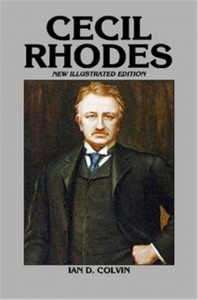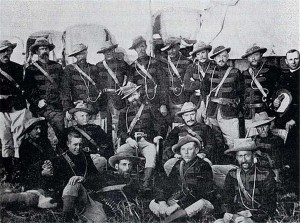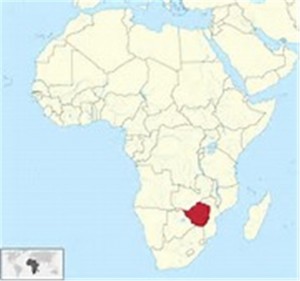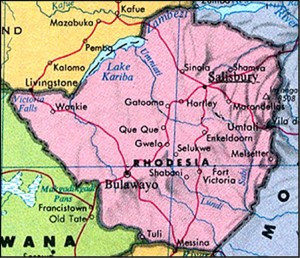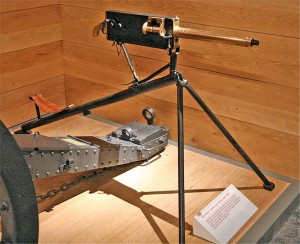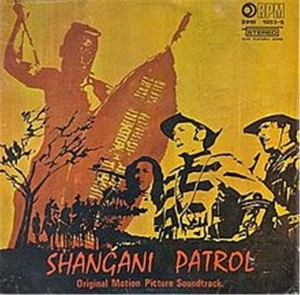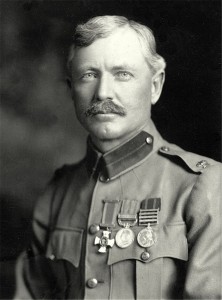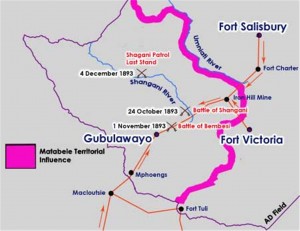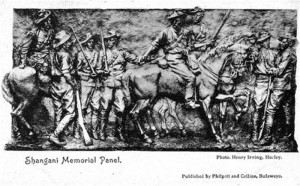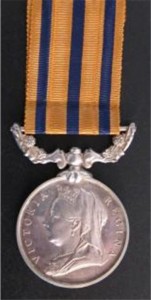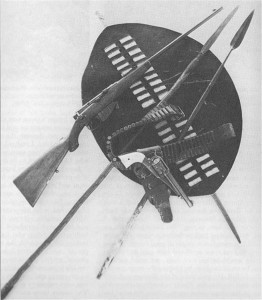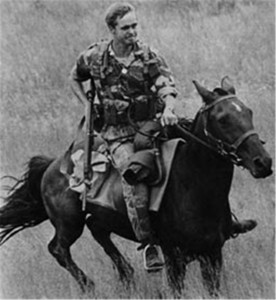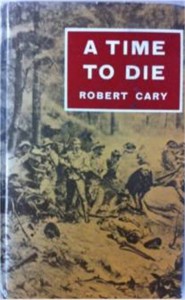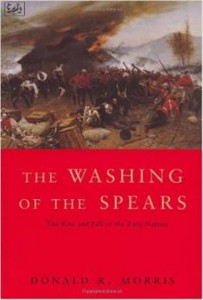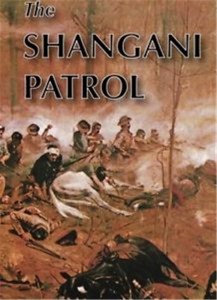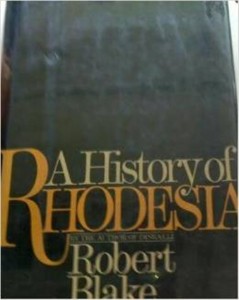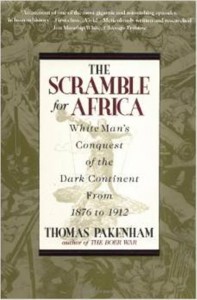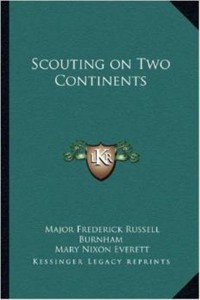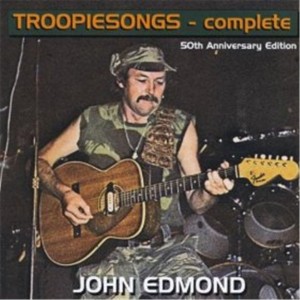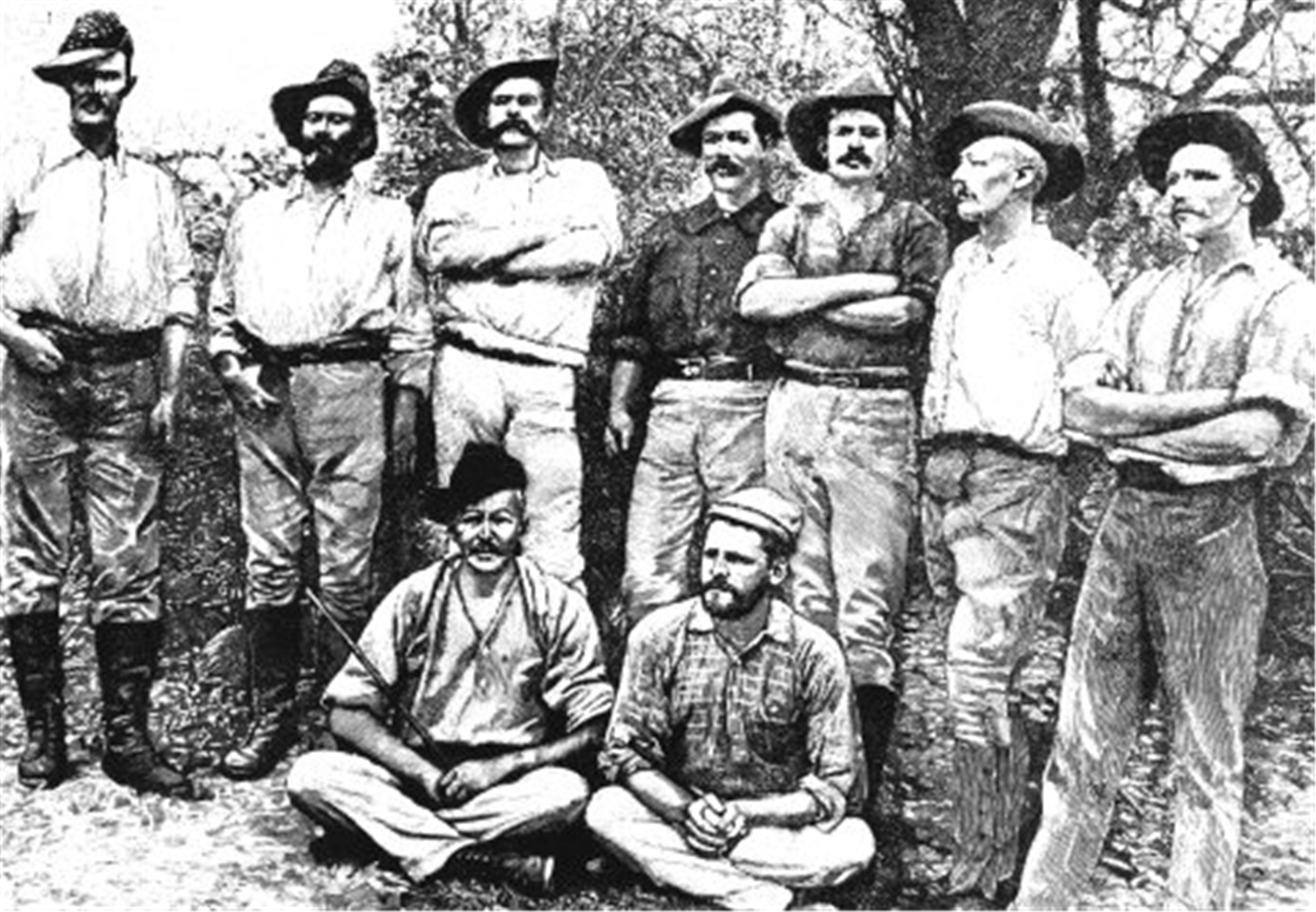 Some of Shangani Patrol. Allan Wilson 3rd from left top row
Some of Shangani Patrol. Allan Wilson 3rd from left top row – The day was getting late. Much longer and it would be a few remaining Martini-Henry’s against thousands of assegais in the gloom. The horses were long dead… and many of the volunteers. One more hard push by the Matabele and it would all be over. It was becoming obvious that any relief force was still on the wrong side of the Shangani River. –
At the Three Rivers cemetery in California are the graves of two men who had been at the Shangani River in Rhodesia in December of 1893. One was an American scout from the Apache wars who would later hold a commission as a British Army major…another was a Montana cowboy. Their families lie there… and another family who had been early pioneers in Rhodesia. The story began in 1890…
The British Empire was at peak strength. Belief in the Empire combined with what was then called “Muscular Christianity” sent countless men, and later families, into new colonies.
In Africa the British had a vision of a railroad running from Capetown to Cairo. South Africa was partly British… viewed as a mere detail… it was assumed that the Boer republics would ultimately be incorporated. But to the North was territory without a firm claim by the European colonial powers.
Bordered on the South by the Limpopo River, the West and North by the Zambezi River and in the East by Portuguese Mozambique. The area that would become Rhodesia was roughly the size of California, but in a roughly circular shape.
Unlike much of Central Africa, it was not endless jungle. Most of the country was either welcoming highlands with trees and meadows or bush veld. Much mineral wealth had been discovered in the high veld and it was likely that there was far more.
It was important to lay claim to the area before the French or the Belgians or other countries did so first. Part of what came to be known as “The Scramble for Africa…”
The British were not alone in this manner of thinking. Almost a decade later the U.S. (semi)reluctantly took over the Philippines rather than let the Germans (they had a fleet there) or God forbid, the Japanese… move in.
Of course, the natives got there first… and one tribe was even more dangerous than the Zulus had been in South Africa… the Matabele.
The Zulus under Shaka had formed a military machine unlike anything in Africa South of the Sahara. Given Iron age armor, they could have stood against Roman legions.
One leader under Shaka was named Mzilikaze… He was a special favorite and almost an equal to Shaka… being presented with what amounted to an ivory “marshal’s baton” identical to Shaka’s… the only Zulu leader so honored.
Mzilikaze behaved too independently and Shaka reluctantly sent a massive force to destroy him. Though heavily outnumbered, Mzilikaze’s warriors soundly defeated Shaka’s… the only defeat that the Zulus under Shaka ever suffered.
Mzilikaze was not going to wait for an even larger force to come after him. Eventually he made his way across the Limpopo River into what would later become Rhodesia. Along the way his warriors “…created a desert and called it peace…” The Zulus did not follow. His people would be known by the British as the Matabele.
The British were aware that there were other tribal groups in the area North of the Limpopo… especially the Mashona… but it was the Matabele who mattered. The Mashona were an agrarian tribe who suffered heavily at the hands of the Matabele.
The British decided to move. No sense waiting for another colonial power (or even the pesky Boers) to move first. A mining treaty with the Matabele gave them leave to enter in numbers. The brain and money behind this venture was Cecil (the ‘e’ in his name has an ‘eh’ sound) Rhodes. A sort of combination of George Washington, robber baron, and Teddy Roosevelt…
He had made his fortune as a young man in South Africa. His vision of the British Empire was breathtaking to say the least. One quotation of his:
“Remember that you’re an Englishman, and have consequently won first prize in the lottery of life…”
The British government had little taste for organizing and running Crown Colonies. They were expensive, often tied down regular forces… and too often were a major headache. But British adventurers, hunters, traders, and missionaries could not be permitted to simply wander into new territories… Britain had been dragged into wars with natives… and sometimes almost with other colonial powers that way.
The answer was for the Crown to license a private “company” to run the area… reporting to the British Foreign Office. The original model for this was the British East India Company. Let the companies pay their own way. After the Indian Mutiny the Crown had to tighten up the reins a bit… but in general it worked splendidly.
The companies would have a charter that permitted them to run the area involved as if they were a government. They could set up laws, courts, and police (army in the case of India…). They could negotiate treaties with the indigenous people and issue land grants and so on.
In 1890 the British South Africa Company (BSAC) sent the Pioneer Column across the Limpopo River. The first wave had 500 handpicked volunteers. A fair number served in the British South Africa Company’s Police… (years later it would become the “British South Africa Police”, the Rhodesian national police force.) Their mission was much like that of the Texas Rangers 1835-75… both police and military.
Pioneer Column 1890
The Column reached what would later become Salisbury (after 1980, Harare) and set up Fort Salisbury. One of the chief guides had been the famous hunter and scout, Frederick Courtney Selous (the Selous Scouts named after him.)
For a time things went smoothly. More settlers came into the country and some created new settlements between Salisbury and the Limpopo.
The Matablele chief (Lobengula) was the son of the late Mzilikaze. However stern he was with his own people (and especially other tribes) he went out of his way to maintain good relations with the British. He was aware of what had happened to the Zulu nation in 1879.
He also knew that the Portuguese, the French, and especially the Belgians would be far worse than the British… (He did not live to hear of the later German genocide of natives in the country of Southwest Africa…)
The problem was that the Matabele were on a rampage. They took over some neighboring tribes and had them pay continuous heavy tribute. At that, the tribute tribes were luckier than others who were no more than raid fodder… Crops destroyed or stolen, livestock taken, and other than young captives … mass murder.
By August of 1893 the Matabele claimed that a handful of Mashona had stolen some of their cattle and taken them near the Fort Victoria area. Lobengula sent an impi (regiment) to devastate the Mashona in that area. He did caution his commanders not to engage the whites. But his good intentions on that front ignored a growing problem.
The situation that had been building up might be likened to “fuel loading…” The younger Matabele warriors dismissed the whites as weak… nearly helpless. The Matabele on the other hand (with some justification) called themselves “The Bravest of the Brave.”
Growing agitation to drive or wipe the Europeans out. So far any such inclination kept in check by the hideous punishment that Lobengula would mete out. But the fabric of peace was fraying.
The whites had settled in the midst of agrarian tribes… especially the Mashona. The Company’s government officials gradually taking these natives under their wing and in small incremental moves making them subject to their laws. The biggest incentive was a declaration that all peaceful and well-behaved tribes would be under the Company’s protection.
The Matabele impi slammed into the Mashona gathered around the white settlement at Fort Victoria and indulged in an orgy of fire and blood. While not attacking the whites or their property, an arrogant air of “…keep out of our way or we’ll eat you…” was displayed.
The Company officials found themselves in a “double-bind” situation. Interfering with the Matabele courted war… but failure to honor the guarantee of protection would undermine the credibility of the government.
A small force of Company police and “militia” approached the Matabele… to talk, not fight. Most, especially those younger than their mid thirties had no experience of serious tribal warfare. The Matabele… soaked in blood… must have appeared as alien as so many bare chested Klingons saturated with steroids and angel dust.
The Matabele warriors were outraged… these “weak” whites were not only not cowering… overwhelmed with gratitude for Lobengula’s unprecedented mercy… but were actually trying to interfere in a retaliation raid by the mighty Matabele. The impi’s leaders were slow in realizing what was going to happen.
Like sparks in a combustible vapor, violence erupted. A number of Europeans and Matabele were killed. The Matabele leaders quickly got their warriors in hand and retreated to report the news to Lobengula. The casualty count on this skirmish was small, but both sides knew that the “spears had been washed” and that there was no going back.
The BSAC would later be accused by some of welcoming the war… even starting it. The reality on the ground was far different. The Europeans were massively outnumbered and located too far from each other for mutual support. Nearest British troops at the Cape…a quarter of the way down the continent… and only primitive dirt roads. The hideous disaster in the 1840s where British forces and dependents were destroyed trying to evacuate Afghanistan might just be repeated.
When the Zulus went to war in 1879 all of their warriors had assegais… the short stabbing spear, used much like a Roman sword. Maybe 20% had access to guns… but mostly poor quality muzzle loading trade muskets. Something like 25% of Lobengula’s forces had breech loading Martini-Henry rifles that fired modern cartridges (though still black powder at that point…)
The only hope for the pioneer Rhodesians was to take the war to the Matabele… away from the settlements. Lobengula did not move immediately and the Company had from August until October to get their forces and supplies together. Seven hundred men… BSAC Police and volunteer militias serving under the authority of the BSAC.
Whether Lobengula intended to exterminate the whites or just drive them out is not known. Health problems (which would only get worse) seem to have delayed him. But when they moved, he sent 3,500 warriors against them. The warriors were keen on a frontal assault on the improvised British positions. Though likely to be costly, it was almost certain to succeed… but…
The Company had purchased four early model Maxim belt fed machine guns (not hand-cranked Gatlings as sometimes mentioned in error…) These were modern belt fed machine guns that fired 500 rounds per minute and were the precursors of the countless versions of Maxim guns used by all European (and Turkish) forces in WW1.
On October 25th, 1893… the Matabele impis charged. When the smoke cleared, out of 3,500 warriors… 1,500 were dead, and many wounded. Four Rhodesians were killed.
On November 1st, 1893 at Bembesi, about 30 miles NE of Bulawayo the Matabele tried again… Four thousand assegai wielding warriors launched an assault, supported by 2000 riflemen. On paper it would seem to have had every chance… but as with all tribal African troops not given extensive firearms training… their marksmanship was hopeless… The weapons good to 400 yards… the Matabele might hit a deployed bed sheet at 40.
The charging Matabele were fearless… but the bullets didn’t care how brave they were. This time the Matabele lost 2,500 dead. As a Rhodesian ballad eighty years later said, “The Bravest of the Brave could not face the Maxim gun…” The Matabele would not try straight up massive assaults on Maxim armed troops again without offsetting advantages.
The Company didn’t know it, but the First Matabele War was almost over. They decided that to win it they needed to chase down and capture Lobengula and make his army surrender their rifles.
Lobengula was running to the North. He still had a very large and powerful army. But he was also quite ill (most likely smallpox…) He crossed the Shangani River and left one of his best commanders, inDuna Mjaan behind with a large force to delay, or if possible, destroy any pursuing force.
The Company sent 290 mounted troopers (think mounted infantry rather than true cavalry) after the Matabele. It would not work out well. The three top commanders were Major Forbes, Major Allan Wilson, and Commandant Pieter Raaff. Forbes had been a regular British officer and was given command… but he knew little of African bush warfare and was commanding mostly volunteers… not regulars.
Raaff had commanded volunteer forces in the Zulu War of 1879 and had distinguished himself in one major battle… He had helped prevent a disaster in that earlier war from turning into a massacre.
Wilson had also fought in the Zulu war, but as a Sgt. He knew Africa and was popular with his men, but his commissioned rank had come to him as a volunteer officer with no prior command experience.
His troopers they were loyal
His troopers they were young
They’d follow Allan Wilson
To the setting of the sun…
Forbes had courage and energy… but no concept of how to command a force made up largely of untrained volunteer militia. Treating them like regular recruits on a British parade ground did not produce favorable results.
Another problem was that the dry season came to an end. The rains normally come in November… and while not quite “monsoon” are still very heavy and regular. Turned out that in 1893 the rains were on time. The primitive “road” that they were following (Lobengula was ill and riding in a wagon, which made it easy to track) soon became a quagmire.
The militia were under no compulsion to continue. The volunteers were away from their families… who were at home without adequate protection. Their (usually privately owned) horses were suffering from the pace… (some oxen hitched to wagons had died from the effort.) And they had had enough of Forbes.
Some units like the Salisbury one left almost to a man… other units had larger numbers remain. Only 160 men kept up the pursuit. Mjaan soon became aware of this.
Forbes’ column approached the Shangani River. It was wide, but easy to cross. The Rhodesians were running out of gas. Supplies were running low and no significant contacts had been made. They were going to have to finish this soon or turn back.
Forbes set up a “laager”, a hastily fortified camp some two hundred yards on the “near” side of the river. He sent Allan Wilson and a patrol across the Shangani to attempt to make contact with the rear of Lobengula’s column.
Unknown to Forbes and Wilson, Mjaan had prepared ambushes on both sides of the river. He was far wiser than the commanders of the last two pitched battles.
Wilson had been instructed to return by nightfall. But he spotted Lobengula’s wagon at a camp ahead and decided not to risk losing contact. He would spend the night in the bush not knowing that the clever Mjaan was using the wagon as bait… Lobengula had been sent ahead.
Wilson sent a couple of troopers back to inform Forbes of his discovery and his intention to keep within range of Lobengula’s presumed location. He requested reinforcements and a Maxim gun.
Forbes tried to play it both ways. He only sent 20 volunteers to join Wilson… and no Maxim gun.* This brought Wilson’s strength to 37 men… too many for a recon patrol… and too few to make a grab for the king.
They were hands from many a land
And many a distant shore
They would follow Wilson
A soldier to the core…
Wilson’s patrol had British nationals, a Canadian, a New Zealander, some South Africans, an Australian… and two Americans.
Because so many volunteers left some days before; there was a surplus of officers cluttering up the pursuit column. Some joined Wilson for lack of anything better to do. The 37 men had one major, four captains and two lieutenants.
One American was a Montana cowboy. The other was Frederick Russell Burnham. Born to missionary parents on a Sioux Indian reservation he ultimately found himself scouting for the Army in the last of the Apache Wars.
Burnham was a close personal friend of Frederick Courtney Selous (and later, Baden-Powell). He had one of the most amazing lives of any American. He was the model for the fictional character Alan Quartermaine. Even though an American citizen, during the later Boer War he would be commissioned a regular British major by the King of England.
Burnham was a great scout (his official title in the Rhodesian force was “tracker…”) but it didn’t take one to understand the situation. The patrol was on the wrong side of the river. It was both too big and too small. They were in “Indian territory” and they were in range of as many as 4000 hostiles.
Wilson had already stayed longer than originally intended. Forbes’ action had been confusing… instead of sending a messenger with orders to return… he had sent 20 men. But he had not brought up the column. Wilson decided to make a run at the Matabele “wagon camp” to see if he could grab Lobengula.
The patrol approached. Mjaan saw them. He could not believe that the Europeans were so brave as to send such a small number to potentially face entire impis. He kept his warriors down.
The patrol approached the camp and when within shouting distance Captain William Napier called out in a Matabele dialect for Lobengula to surrender. The call was made a number of times. Wilson had appreciated Burnham’s warnings, but suddenly he felt as if he had stepped inside a noose.
The patrol wheeled away. The Matabele jumped up and many shots were fired. No troopers were hit… but critically, two horses were killed. Doubling up on two of the mounts, the patrol rode out of the killing zone and towards the river. A large blocking force of Matabele were in their path.
The warriors were somewhat taken by surprise and most of the patrol might have survived if they immediately tried to fight their way through. But the four troopers doubled up had no chance. Wilson and his men had no intention of leaving them behind. The patrol swung off into the trees and cover.
Wilson decided that he would stand and fight. His survival depended on reinforcements. The two men in the patrol with the best chance of getting through to Forbes were Burnham and the other American. At the last minute he ordered the Australian to accompany them.**
Rain was falling and the Shangani began to swell. The three men made it across but the effort was massive and their hearts sank… Forbes would play hell getting his entire force across.
Forbes may have been the wrong man to command, but he was not a fool. He rightly suspected that the Matabele had significant numbers on his side of the river. Wilson had suggested in his message that the column cross at 0400. But the river was still rising and Forbes felt certain that his column would be hit and massacred in the night if they moved out from the laager.
He was right. The camp was hit in the dark. Mjaan did not throw human waves at the Rhodesians. Instead he had his men remain under cover and fired at the Maxims and the horses. They would not overrun the camp, but the fate of the Shangani Patrol had been sealed.
Something like 2000 warriors slowly closed in on Wilson and his men. A couple of troopers were wounded and all thoughts of mounting up and trying to break through abandoned as the men began firing.
The warriors were vile shots… but there were a lot of them… Eventually horses… and then men… were hit. Some assegai charges made, but were shot to pieces.
Wounded troopers kept up a hot fire. The Matabele were impressed… Assumptions of weakness vanished. “What kind of magicians are these men…?”
It was a long day, but before the light faded the patrol’s ammunition ran out. The end was very near.
The warriors prepared for a classic assegai charge… this time knowing that they would only face clubbed rifles and a few swords. The surviving members of the patrol were witnessed shaking hands… and they began to sing.
Victorian legend would forever claim that the men sang “God Save the Queen”… and in later years warriors were encouraged to “attest” to that. But a Matabele warrior did not know one European tune from another any more than an average American knows one Chinese opera from another.
It might have been “God Save the Queen”, or it might have been “The Minstrel Boy” or even the raunchy “One-eyed Reilly…” All we know is that they sang something. The Matabele always sang going into action and were impressed that the patrol’s survivors did just prior to the final act of the battle.
One final rush and soon it was over. Thirty-four officers and men lay dead. The Matabele would mourn something approaching 400 dead with many more wounded.
The usual Zulu/Matabele treatment of dead enemies was to slash them open. But Mjaan demanded the attention of his iron disciplined warriors and said,
“We were fighting men of men, whose fathers were men before them. They fought and died together. Those who could have saved themselves chose to stay and remain and die with their brothers. Do not forget this. You did not think the white men were as brave as the Matabele; but now you must see that they are men indeed…”
The bodies were not mutilated in the customary manner, though “face skins” from two bodies required to show the king proof of what was reported to him. Mjaan was a wise and talented warrior who would have respected such gallantry. In addition… with the king sick, he was next in line and it would be his lot to bring this sad affair to an end. Mutilated corpses would not aid him in his efforts.
Most of the warriors came to take a good look at the bodies of the patrol members. Shock hit many of them. In the Zulu/Matabele culture, bearded, gray haired warriors in their 40s made up the king’s toughest regiments. Wilson was only in his 30s and most of his volunteers far younger, some in their late teens. Many in the patrol were clean shaven, or nearly so.
Some of the Matabele began to murmur that they had been fighting “boys…” A few nervously asked, “What will we tell their fathers when they come looking for them…?”
AFTERMATH
Forbes’ decision against crossing the Shangani in the dark and preparing for an attack was valid. But it also marked the effective end of his command. While he never formally relinquished his authority, Commandant Raaff quietly took over as Forbes slipped into a “funk…”
Raaff had the column disguise the camp to make it appear occupied. This included quickly fashioned dummies and a piece of wood altered to make it look like a Maxim gun. The ruse bought the command precious hours back on the trail to Bulawayo.
Raaff had extensive combat experience in the Zulu war, and in spite of Matabele impis trying to wipe out his column… he was able to get it back to Bulawayo… even though many of the animals had died and many of the men were wearing altered leather bandoleers as shoes.
Forbes was ignored and largely vanished. Raaff was treated as a hero, but sadly died of natural causes the following year.
Lobengula died of smallpox in late 1894. The Company had told him that he must surrender his firearms before they would let his people plant crops… but the British Foreign Office in London declared that demand to be “inhuman” and overrode the Company.
With peace, the Company negotiator accompanied Mjaan to the site of the Shangani Patrol’s last stand. They received what would prove to be a temporary burial. Mjaan was an old man and had lost his son in one of the battles. He would not live long.
A couple of years later with many Rhodesian troopers involved in a South African misadventure (and later held prisoner there for a time) in a scheme possibly cooked up by the British Foreign Office… the Matabele picked up their hidden rifles and went at the Rhodesians again… this time killing hundreds of civilians.
This too was put down. With bad timing the Mashona waited until the Matabele were down for the count before rising up. Any chance that they had was lost when they waited.
Frederick Burnham would go on to astounding adventures in Alaska, Mexico, the Boer War and elsewhere. His amazing autobiography listed in a section below. He and his buddy from Montana are buried in California as mentioned above.
LEGACY
When Cecil Rhodes died years later, he was buried on the stony top of what is known as “World’s View” near Bulawayo. At his request the remains of the Shangani Patrol were interred close to his. A monument remains to this day… the brass chains and fixtures stolen, but the monument left by the Marxist government because it brings in tourist dollars.
The stand of the Shangani Patrol was to the Rhodesian identity what the Alamo was to Texas. Both the Rhodesian BSAP and the Rhodesian Army taking some of their traditions from those days.
The BSAP retained mounted (peacetime) Patrol Officers on horseback well into the 1950s. (Though camels had been tried in the early 1900s because they were not as susceptible to various animal diseases prevalent at the time.)
During the Rhodesian Bush War the Army fielded the Grey’s Scouts… essentially a mounted infantry force on horseback. While trained to fight from the saddle if need be, they were not “cavalry…”
The BSAP had a mounted infantry unit of its own. The Police Mounted Infantry Unit (MIU). Many of the members were black constables. Both the Army and Police units were very effective.
The Matabele… like many warrior tribes in British Africa settled down and learned to adjust. The Mashona were the big winners in the Matabele wars. Had the Pioneer Column arrived a decade or so later, the Mashona would have been destroyed or driven from the country. The Matabele themselves were no longer subject to summary execution and witchcraft trials. But some historians prefer to ignore this.
The Mashona never forgot or forgave the Matabele. When Robert Mugabe (a Mashona) became (effectively) the Marxist dictator of Zimbabwe he imported North Korean “advisers.” They formed the infamous “Fifth Brigade”, a unit separate from the rest of the Army. Training, equipment, uniforms all different… and above all else… not answerable to regular military command structure.
At least 20,000 Matabele were killed by the Fifth Brigade even though they had not shown any resistance to the government. The deaths were to scare many into fleeing and terrorizing the rest. One of the favorite killing tactics was to force Matabele civilians into huts… then burn them to the ground. But some historians prefer to ignore this too.
Up the wild Shangani
And down the other side
Up the wild Shangani
Where Alan Wilson died…
-Yankee Papa-
NOTES
* Like the Gatling, the Maxim gun was really only good for set piece battles. The Seventh Cavalry did not take their Gatlings to the Little Big Horn because Congress purchased only reject horses to draw them.
On wheels they could not have accompanied the troops into rough country… broken down on mule back they could not have been deployed in time. In any event most of the Indians behind cover… The Gatling gunners would have soon been shot down.
The Maxim pretty much had the same problem. Had Wilson possessed one at the point of his last stand… the gunner(s) would have soon been shot down.
** Some ignorant writers have questioned the sending of three men to ask for help. Even when not under direct enemy threat, Wilson had routinely sent two or even three messengers at once. More likely that one at least would get through.
In sending the Americans Wilson was sending the two members of his patrol most likely to succeed in reaching help. In this case help was far more important than two or three more guns. The last second addition of the Australian extra insurance that one would get through. If one wounded, one could press on while the other two tried to manage.
SUGGESTED MATERIALS
RHODESIA-DVD: THE SHANGANI PATROL
Note: The above is a 1970 film shot in Rhodesia. Interesting, but not up to the standard of say “ZULU…” Burnham (played by Will Hutchins)portrayed as competent, but sort of a hick… which he definitely was not.
A history of Rhodesia by Robert Blake
British author not pro-Rhodesian… but still praises their ability to raise Rhodesian blacks to prosperity.
Scouting on Two Continents by Major Frederick Russell Burnham
https://www.youtube.com/watch?v=HVStQsIxCtk
The above is youtube recording of the song “Shangani Patrol” by John Edmunds, Rhodesian vet and author of the wildly popular (ca. 1976) “Troopie songs…”
Troopiesongs – Complete by John Edmond
Above on Amazon.com is complete album (though he has many more… some relating to modern wars) Gives you chance to purchase at 99cents a song. Real flavor of the country including pass into towns “…spend the night on somebody’s lawn…”
-YP-
Tags: Africa
